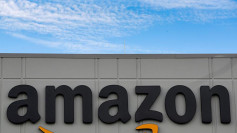Goldman Sachs economists project that by 2025, global investment in Artificial Intelligence (AI) could reach up to $200 billion.
Historically, the introduction and widespread application of innovations in electricity and personal computing led to investment surges that contributed 2% growth to U.S. GDP. Economists Joseph Briggs and Devesh Kodnani reported on Aug. 1 that the contribution of AI to U.S. GDP could be as high as 4% and about 2.5% in other countries already heavily investing in the technology.
The forecasted growth is largely attributed to the rapid development of generative AI, including noteworthy examples such as OpenAI's chatbot, ChatGPT, image creation software, Midourney, and text-to-speech generator, Eleven Labs.
Briggs and Kodnani suggested in their report that generative AI has enormous economic potential and could increase global labor productivity by over 1% per annum within a decade of its widespread adoption. However, they also noted the hefty initial investments needed by businesses to realize this transformation.
To facilitate a large-scale shift, companies would need to make substantial upfront investments in physical, digital, and human capital to acquire and implement new technologies and reshape business processes. By 2025, these investments could potentially amount to about $200 billion globally, occurring even before the usage and efficiency enhancements start driving significant productivity improvements.
The economists speculated that if Goldman Sachs' predictions on AI growth fully materialize, AI-related investments could constitute 2.5-4% of U.S. GDP and 1.5-2.5% of GDP in other AI-leading nations.
By 2025, AI investment in the U.S. could approach $100 billion and nearly $200 billion globally. Despite rapid growth, the current low share of AI-related investments in the U.S. and global GDP means the short-term impact on GDP might be limited and it could take several years for it to have significant economic effects.
Goldman Sachs also mentioned that more than 16% of companies in the Russell 3000 Index have referenced AI in their earnings call, marking a substantial increase from less than 1% in 2016. This, according to Goldman Sachs, puts the U.S. at the forefront of AI innovation.
Although the timeline for AI investment cycles is difficult to predict, the current business surveys suggest that AI will begin to have significant investment impacts after 2025.
Based on 2021 U.S. business surveys, only 4% of U.S. companies reported using AI in their operational processes. Likewise, less than 25% of CEOs surveyed anticipated that generative AI would impact their companies or reduce their workforce requirements within the next one to three years. This suggests that the majority of companies expect to adopt AI within the next 3 to 10 years.
If these timelines are accurate, AI adoption could start having a meaningful impact on the U.S. economy sometime between 2025 and 2030.
AI investments are anticipated to concentrate in four key business sectors: companies training and developing AI models; companies providing infrastructure for running AI applications, such as data centers; companies developing software for running AI applications; and the end-user businesses paying for these software and cloud infrastructure services.
Goldman Sachs economists predict that AI investments will primarily come from hardware investments used for training AI models and running AI, as well as an increase in AI software spending.
The report noted, "Until now, AI investment has primarily concentrated on model development, but to scale AI, there may need to be greater hardware and software input."





